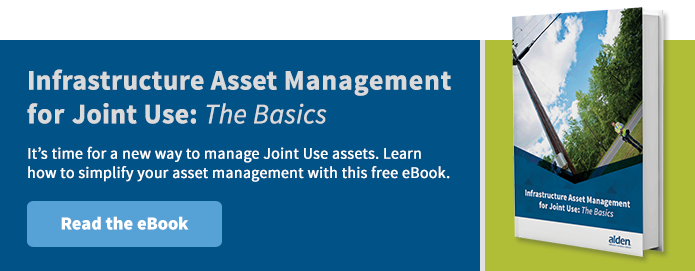Deregulation: Managing Change with Infrastructure Asset Management
 Just a little under half of all U.S. states have deregulated energy[1], a construct that allows consumers to shop around for their service provider. The other half, however, are not immune to its influence. Deregulation changed the game for everyone in the infrastructure business, for two major reasons. First, other services that travel over pole owners’ equipment such as cable and telephone are widely deregulated. Second, as we have seen happen in Europe where deregulation is a little more entrenched, even in fully regulated areas, many U.S. governmental entities are now looking closer at utility owners’ costs and asking some poignant questions, including "how much are you spending, and on what?"
Just a little under half of all U.S. states have deregulated energy[1], a construct that allows consumers to shop around for their service provider. The other half, however, are not immune to its influence. Deregulation changed the game for everyone in the infrastructure business, for two major reasons. First, other services that travel over pole owners’ equipment such as cable and telephone are widely deregulated. Second, as we have seen happen in Europe where deregulation is a little more entrenched, even in fully regulated areas, many U.S. governmental entities are now looking closer at utility owners’ costs and asking some poignant questions, including "how much are you spending, and on what?"
It is time for a shift in the way owners manage the costs associated with asset management, and it is pretty simple to figure out why.
As Alden CEO John Sciarabba explains, "As assets get older, it costs more to maintain them, and as more of them age, there’s more of them to maintain. As a result, in a fully regulated environment, the cost of providing the service to the customer has now gone up. So, the utilities go to the regulatory body and say, ‘The cost has gone up, and you allow us to earn X-percent, so we’re going to make the rates to the customers go up.’" The net result is that unhappy customers are unhappy constituents, which creates unhappy voters. Agencies must look closer at how public money is spent.
Spending Smarter
Regardless of your situation, regulated or deregulated, the bottom line for utility owners today is, "How do I spend the money better?" The solution lies in your assets and in how you deal with overall infrastructure asset management.
The path forward rests on one compelling question: What will your plan be as deregulation continues to creep across the U.S. and governing bodies expect more efficiency from pole owners and utility providers regardless of market type?
One option involves living in the past: time-based infrastructure asset management. The traditional method for maintaining and replacing assets in the field is time based: every few months, a different asset is on the schedule to be assessed, fixed or replaced if necessary. This works well for owners with assets that evenly run the gamut of old to young, but as we have already reported, many U.S. infrastructure assets are nearing the end of their lifespan at the same time, bringing owners dangerously close to a large—and expensive—replacement rollouts.
Another plan involves leveraging the present with condition-based infrastructure asset management. In this methodology the strict, time-based schedule is thrown out in favor of individual assessments of assets for health, safety and effectiveness. In this scenario, owners can prioritize repair and replacement based on need and urgency rather than simply what is next on the calendar. This evolves the process in the right direction and helps owners get the most for their money spent, but does little to address the burden of urgency that a large number of aging assets creates.
You can forecast the future with predictive infrastructure asset management. This goes beyond simply addressing assets one by one on a schedule and extends further than collecting data and repairing what is broken at the moment. It involves leveraging excellent, organized, accessible data collected regularly in the field with analysis that looks at the full picture of an owner’s asset collection to predict probable cause for failure. Insight like this can also look at why some assets perform better or longer than others. Think of this future-focused management like a crystal ball that can help you proactively plan for making updates, repairs, replacements and generally spending money wisely over time.
What’s Next? Find a Partner
A smart partner in infrastructure asset management can help you collect the data you need to gain clarity and take control of your field assets; interpret the data into actionable items that help you meet your goals, whether they are safety, efficiency, or continuity of service; and keep your data up-to-date with strategies, processes, and even personnel to keep your success evergreen.
Learn more and get started planning for the future of your assets and your business by downloading our free Ebook.
[1] http://www.alliedpowerservices.com/deregulated-states.shtml

Comments